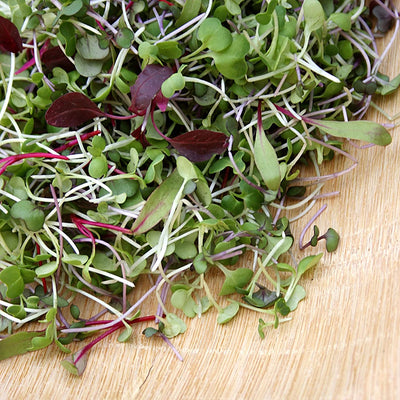
Master Permaculture By Combining These 3 Gardening Tips!
As we learned in previous blog posts, permaculture is a way of life. For many people all across the globe, what started as a gardening technique has grown into a new philosophy, a new relationship with nature as a whole. Starting with the soil and working up, permaculture re-writes the outline for how we look at the garden. Through permaculture practices we are not only growing plants, we are growing soil. By starting here, permaculture results in an ecosystem that works within itself.
There are many wonderful facets to permaculture, three of the most important are interplanting, livestock, and agroforestry. Understanding the differences between these terms will give us the tools we need to develop a system that gives as much as it takes from the garden.
Let's get started.
Interplanting
Intercropping and all forms of interplanting were not techniques invented recently. Indigenous cultures have used intercropping methods as a way to maximize space and increase soil health for ages. The two phrases often get mixed up because of their similarities, but there are a few important differences that draw a distinction between them. Interplanting is the practice of planting quick-growing crops and slow-growing crops side by side. Not only is this great use of garden space but can also lead to enhanced soil structure and soil nutrient content. This technique allows the gardener to harvest at different times throughout your season, maximizing your bounty.
Intercropping is the practice of planting varieties that benefit neighboring crops. The “Three Sisters” planting method is an example of this practice. This indigenous gardening method intercrops corn, beans, and squash for mutual benefit. Corn grows up as the trellis for the beans to climb and the squash is used as ground-covering acting as a weed suppression. Each of the above plants give and take their own nutrients from the soil making them all great companion plants.
Permaculture Livestock
Using livestock brings many benefits to your growing practice. Even on limited means, be creative with your sourcing! Network with neighbors in your area who raise rabbits, alpaca, or any grazing animals. Ask to collect waste for nutrient additions to your garden. Different animals will graze and benefit the soil in different ways. Cows are picky when it comes to their diet, so sending them into an overgrown area may not be the best and most efficient option. Pigs can come through and accomplish some of the clean up before the cows begin grazing fresh grass. They will eat just about everything and will clear and till the land when needed. Chickens, ducks, and common birds will eat pests. Whether you are in a place where livestock is necessary to develop your growing area or not, they lend and hand in nutrient additions to amend your soil along the way!
Note: For those without permission to keep livestock in their cities, adding bird feeders and birdbaths will bring biodiversity to your space.
Agroforestry
Agroforestry is the practice of growing trees or shrubs within your crop space. In a home garden or small farm, fruit trees and berry bushes are the perfect places to start! Plant bushes and trees of varying heights to prevent soil erosion and breakdown. The deep roots help the soil hold onto water for later use by all the plants around them. Trees and shrubs are homes for wildlife, adding to the overall diversity of the ecosystem. They also add microclimates to your space, expanding the possibility of crops that you can grow. Microclimates from trees provide the shade needed to cover tender plants. In tune with permaculture, trees add another layer of food production and environment to the garden. If you are someone without the space for tree planting, many fruit trees can grow in containers! For more on planting fruit trees in containers, click here.
Plant away!
Permaculture techniques act as built-in pest control. These methods decrease the threat of midseason invasions of pests or disease. Growing crops in uniform rows, a practice taken from traditional farms, often has more cons than pros. Let's get into the reasons to branch away from this misconception. Planting your crops in traditional straight rows basically sets up an all you can eat buffet for pesky critters. Most farmers don't have the option to easily integrate permaculture practices. They are typically growing one crop per field and have to put harmful practices into play to combat issues that come with each season. Layering the permaculture techniques we have discussed here creates a defense system that prevents disease and infestations that many gardeners have.
As home gardeners, we have the unique ability to integrate permaculture practices wherever we choose. Permaculture views the entire garden, including the techniques you choose to apply, as a living organism in itself. This philosophy sees constant growth and transformation in the garden. Take notes from your past garden experience and adapt your practices to each season. Eventually, your notes will become a beautiful story of growth and transformation.
In Conclusion
Taking risks and experimenting is the best way to decide what techniques work best for you! Starting with these tactics will move you steps closer to a permaculture lifestyle. Incorporate these techniques to maximize your growing space, give you a continuous harvest each season, and add new layers of abundance in your garden. I hope this post encourages you to share your new knowledge with neighbors and friends.
- Kaitlynn from MIgardener
Did you enjoy this post? MIgardener is passionate about sharing free gardening tips and information! If you are looking for inspiration in the garden, make sure to check out our Pinterest page. Check us out at MIgardener.com or on youtube, Instagram, and Facebook.





Leave a comment